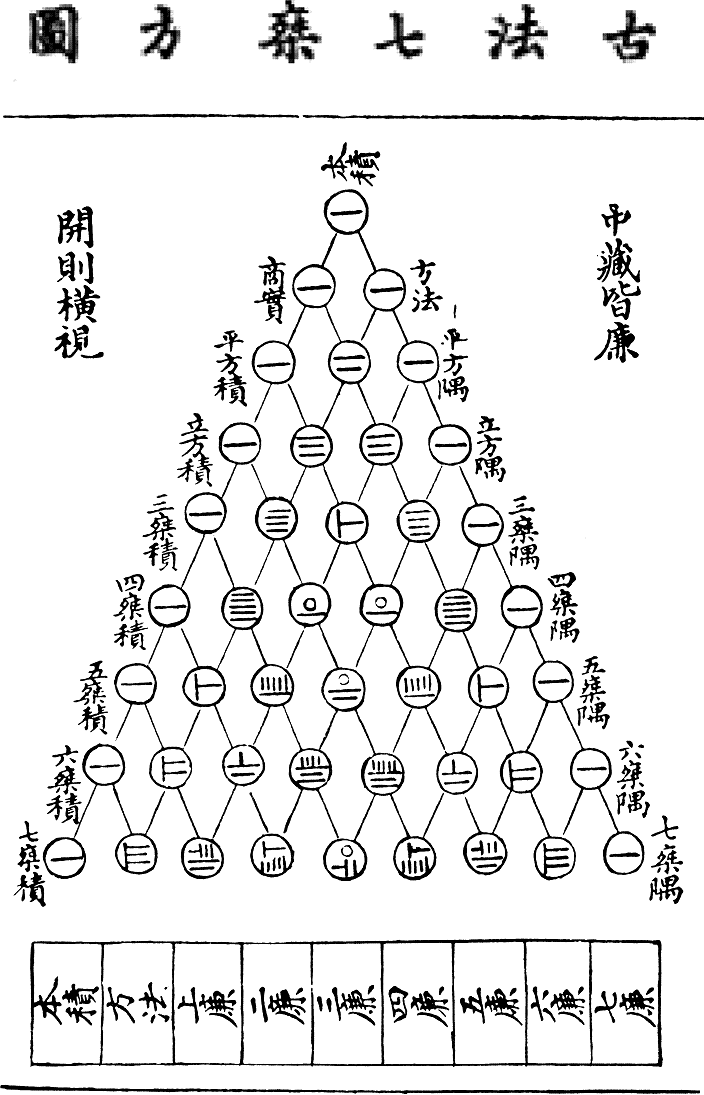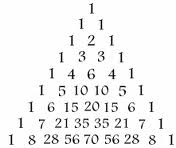- Your fractal assignment is due, our last homework assignment!
L-System rules: Start angle: 0 Turn angle: 90 Axiom: f Rules: f=f-[f+f]+f
- Another important assignment is coming up, however, due next time:
your logo.
From our syllabus: "Companies have logos; you should have one, too! Your math logo will be something (like a family crest) that represents you. It will be created using elements from this course (or other mathematical elements of your own choosing). You will type up a one-page sheet, illustrating and explaining your choice. These will be presented the last day of the course."
Remember: your logo description must be typed.
So come prepared next time! I'll randomly choose the order before class, so you must be ready to go at any time. If you want to send my your logo in advance, please do so, so that we can avoid spending time having you download your logo, or load it from a flash drive, or your mail server, or....
- Our final is Thursday of next week, at 1:00. Be here!
- Logistics for the final:
- The final is cumulative.
- You may have three kinds of cheat sheets:
- your platonic solid models, and
- the skeleton of the icosahedron (made out of 4x6 cards).
- A mobius cheat sheet (made from one 8.5x11 (inches!) sheet.
- You have old material, which was covered on the first two
tests, as well as new material (fractals and infinity). You should
review your tests and the keys which are on-line. There will be
some similarity (maybe much similarity!).
- To make the final more interesting, if your final is better than your lower of the two hourly exams, I'll replace the lower grade with the higher final grade.
(When is "infinite love" not enough?!)
I want to start our review by bringing our discussion from last time back to Pascal. At the end of the hour, I demonstrated that there are two different sizes of infinity:
the natural numbers (counting numbers) are not as big as the real numbers (those on the real number line).
We used Cantor's diagonalization proof to show that there is no one to one correspondence between the natural numbers and the real numbers.
The proof was by contradiction: we pretended to have a one-to-one correspondence, then showed that there was a real number without a natural number partner. This implied that the real numbers were just "too numerous" for the natural numbers (the Hilbert Hotel) to hold. You can't put all the real numbers into the Hilbert Hotel.
So there are two sizes of infinity. But wait -- there's more!
I told you that there are actually an infinity of infinities, as one can see because the power set (set of subsets of a set) is alway bigger than the set itself: showers of infinities!
Pascal comes back because of the power sets. We can count subsets by looking at the rows of Pascal's triangle:

Okay, so that's not the way Pascal thought of it:

But we see the value in Pascal's triangle, as anthropology! -- or in the study of languages. We use mathematical patterns to make sense of the world -- to teach us about bamboo counting notation, in this case.
Each row of Pascal's triangle can be thought of enumerating the number of subsets of a given sized set. For example, the row
gives us all the different ways to choose a subset of a set with four elements (four friends, say):
- subsets with 0 elements: 1 way (the empty set -- choosing no one)
- subsets with 1 elements: 4 ways (choosing just one friend)
- subsets with 2 elements: 6 ways (choosing two friends)
- subsets with 3 elements: 4 ways (choosing three friends -- or leaving one out. Notice the symmetry.)
- subsets with 4 elements: 1 way (the set itself -- choosing everyone)
The total number of subsets is, as we know from Pascal's triangle, the sum of these, which is a power of two: $2^4=16$. The set has 4 elements, but the set of subsets has 16 elements. There are 16 different parties you can throw with your four friends.
The power set, or set of subsets, is always bigger.
And this is also true for infinite sets. So we have a "showers of infinities!"
By the way, just to try to blow your minds one last time, if I may: not everything that we say is a set is, indeed, a set. When you think of a set, you imagine that one can decide whether something is in it, or else that something is not in it. The set $T$ of teacups, for example. We can easily decide whether something is in $T$ or not.
But Bertand Russell, whom I mentioned last time, concocted this paradox:
Let $R$ be the set of all sets that are not elements of themselves.
Note: That sounds funny -- are there sets that are elements of themselves? $T$, the set of teacups, is not an element of itself; but the set of non-teacups would be an element of itself!
Then, if $R$ is a set, then it is either an element of itself or not:
- If $R$ is an element of itself, then, by definition, it cannot be an element of itself.
- However, if $R$ is not an element of itself, then, also by definition, it is an element of itself.
On another anthropological note, we saw how we could use a times table for the number nine to understand how the Babylonians wrote their numbers.
And powers of 2 were the key to unlocking Egyptian multiplication and division.
Nature loves patterns, especially the Fibonacci numbers, which are created by a fractal process: add the two preceding numbers; now do it again! Nature probably loves them because they're fractal, because nature loves fractals.
Fractals are so important because, from a simple rule, and simple repetition, beautiful and complex-seeming things appear.
The bunny tree is fractal:

A world within a world.
- A very cool mobius exercise, and
- another mind-blowing thought: the ping-pong ball conundrum.